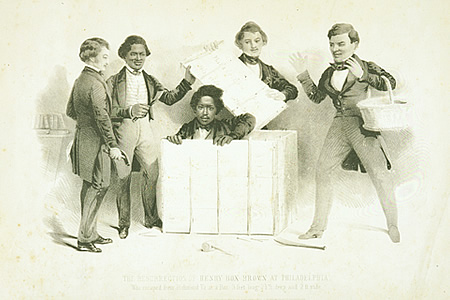astrologaster
n. a foolish or petty astrologer
Who?
Identities assumed by virtuoso impostor Stanley Clifford Weyman (1890-1960):
- U.S. consul representative to Morocco. Arrested for fraud.
- Military attaché from Serbia and U.S. Navy lieutenant (so the two could use each other as references).
- “Lt. Cmdr. Ethan Allen Weinberg, consul general for Romania.” He inspected the U.S.S. Wyoming and invited its officers to a dinner at the Astor Hotel. On being arrested, he was heard to complain that they should have waited until dessert.
- “Royal St. Cyr,” a lieutenant in the U.S. Army Air Corps. Arrested on an inspection tour of the Brooklyn armory.
- Company doctor in Lima, Peru. Threw parties until arrested.
- State Department naval liaison officer. Introduced himself to Princess Fatima of Afghanistan and promised to arrange a meeting with the president. She gave him $10,000 for “presents” to State Department officials. Weyman got appointments with Secretary of State Evans Hughes and with Warren G. Harding. Indicted for impersonating a naval officer.
- U.S. secretary of state. Interviewed Queen Marie of Romania for the Evening Graphic newspaper.
- Personal physician to Pola Negri, Rudolph Valentino’s grieving lover. Established a faith-healing clinic and issued regular press releases.
- Arrested during World War II for telling draft dodgers how to feign various medical conditions.
- Journalist for the United Nations. Caught when he asked the State Department whether he could remain a U.S. citizen if he became the Thai delegation’s press officer.
Ironically, Weyman’s most honest act may have been his last: He was shot trying to stop a robbery in a New York hotel. “One man’s life is a boring thing,” he once said. “I lived many lives. I’m never bored.”
Rocket Mail

In 1959, the U.S. Postal Service tried delivering mail with a cruise missile — they replaced its warhead with two mail containers and fired it from Virginia to Florida.
When it hit the target, the postmaster general announced a new era. “Before man reaches the moon,” he said, “mail will be delivered within hours from New York to California, to Britain, to India or Australia by guided missiles. We stand on the threshold of rocket mail.”
But the program went no further. “The post office has a great charm at one point of our lives,” wrote Jane Austen. “When you have lived to my age, you will begin to think letters are never worth going through the rain for.”
Fitting
DORMITORY is an anagram of DIRTY ROOM.
“Quake Hairs”
From a Scientific American account of a Thai earthquake on May 13, 1848:
During the shock, there spontaneously came out of the ground a species of human hairs in almost every place — in the bazaars, in the roads, in the fields, and the most solid places. These hairs, which are pretty long, stand upright and adhere strongly to the ground. When they are burned, they twist like human hairs and have a burned smell which makes it to be believed that they are really hairs; they all appeared in the twinkling of an eye during the earthquake. The river of Chantibun was all rippling, and bubbles rose to the surface, so that the water was quite white. It is thought that these hairs may have been produced by electricity.
Similar “hairs” have been reported after other Asian earthquakes. Some have been identified as fibers from the hemp palm Chamaerops fortunei, a native tree. Others remain unexplained.
Jim Morrison’s Death

Jim Morrison’s grave, in Paris. Officially, the Doors frontman died on July 3, 1971, but some questions remain. For one thing, no autopsy was performed; a French physician attributed his death to heart failure on the advice of Morrison’s wife, who was the only one to see the body (and who died herself a few years later). When The Doors’ manager arrived, Morrison’s body was already in a sealed casket.
Beyond that, it’s known that Morrison was tired of fame and had told his bandmates that he wanted to fake his own death. Short of an exhumation, we’ll never know for sure, but Doors keyboard player Ray Manzarek has said, “If there was one guy that would have been capable of staging his own death — getting a phony death certificate and paying off some French doctor … and putting a 150-pound sack of sand into a coffin and splitting to some point on this planet — Africa, who knows where — it is Jim Morrison who would have been able to pull it off.”
Lingua Franca
Quidquid latine dictum sit, altum viditur.
“Whatever is said in Latin seems profound.”
Devil Deal
Here’s what a pact with Satan looks like:
I deny God, Father, Son, and Holy Ghost, Mary and all the Saints, particularly Saint John the Baptist, the Church both Triumphant and Militant, all the sacraments, all the prayers prayed therein. I promise never to do good, to do all the evil I can, and would wish not at all to be a man, but that my nature be changed into a devil the better to serve thee, thou my lord and master Lucifer, and I promise thee that even if I be forced to do some good work, I will not do it in God’s honor, but in scorning him and in thine honor and that of all the devils, and that I ever give myself to thee and pray thee always to keep well the bond that I gave thee.
This one was presented as evidence against Urbain Grandier, a French Catholic priest who was executed for seduction and witchcraft in 1634.
Special Delivery

Where there’s a will, there’s a way. In 1849, Henry Box Brown escaped slavery by mailing himself to Philadelphia.
Brown stood 5’8″ and weighed 200 pounds, and he spent 26 hours in a box 2’8″ x 2′ x 3′. Unfortunately, he spent a lot of it upside down. “I felt my eyes swelling as if they would burst from their sockets,” he later wrote, “and the veins on my temples were dreadfully distended with pressure of blood upon my head.” The trip from Richmond covered 275 miles by overland express stage wagon.
When the box was opened, his first words were “How do you do, gentlemen?”
Penthouse, Please
Record skyscrapers through history:
- 1873 – Equitable Life Building, New York: 142 feet (6 floors)
- 1876 – St. Pancras Chambers, London: 269 feet (9 floors)
- 1889 – Auditorium Building, Chicago: 269 feet (17 floors)
- 1890 – New York World Building, New York: 309 feet (20 floors)
- 1894 – Manhattan Life Insurance Building, New York: 348 feet (18 floors)
- 1895 – Milwaukee City Hall, Milwaukee: 350 feet (9 floors)
- 1899 – Park Row Building, New York: 391 feet (30 floors)
- 1908 – Singer Building, New York, 612 feet (47 floors)
- 1909 – Met Life Tower, New York, 700 feet (50 floors)
- 1913 – Woolworth Building, New York: 792 feet (57 floors)
- 1930 – Chrysler Building, New York: 925 feet (77 floors)
- 1931 – Empire State Building, New York: 1,250 feet (102 floors)
- 1972 – World Trade Center, New York: 1,368 feet (110 floors)
- 1974 – Sears Tower, Chicago: 1,451 feet (108 floors)
- 2003 – Taipei 101, Taipei, Taiwan: 1,474 feet (101 floors)
